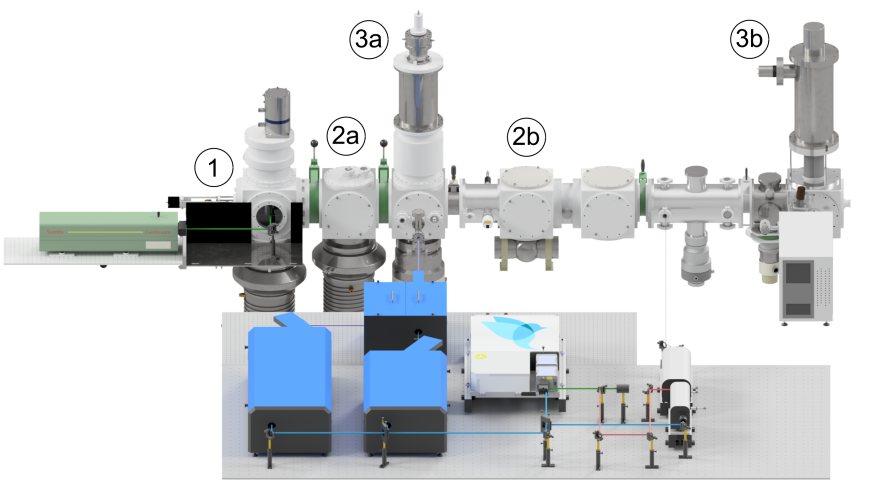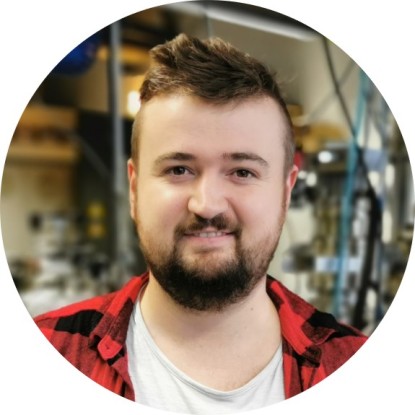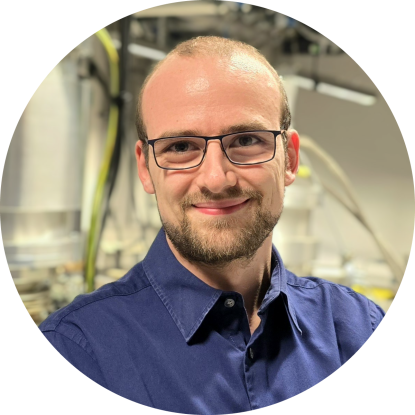Fig. 1shows the experiment for laser spectroscopy on small clusters in the gas phase. The molecular beam apparatus consists of five chambers operated in high vacuum for cluster generation (1), manipulation (2a/2b) and detection (3a/3b). The VUV laser system for ionization spectroscopy of clusters is coupled before (or in) the first time-of-flight mass spectrometer (3a) and reaches energies between 4.9 and 8.2 eV. The UV-Vis laser system, which is tunable in the range of 1.9 to 5.4 eV, hits the clusters during flight, leaving enough time for dissociation. The individual fragments are ionized via a 7.9eV excimer laser in the second time-of-flight mass spectrometer (3b).
The production of the clusters is achieved by a laser evaporization source in the high vacuum. Gaseous helium flows through a specifically clocked valve into the cluster source. A plasma is formed by laser ablation of a translating and rotating target rod which cools down due to collisions within the helium atmosphere and causes the cluster nucleation to generate species of different charge states. A pressure-driven supersonic expansion of the cluster-helium mixture through a cryogenically-cooled nozzle takes place. The molecular beam is further formed by a skimmer shaping the expanding gases and is followed by a state selection and the bombardement of the probing laser.
Wavelength mixing
The principle of sum frequency mixing is based on the effect that two light beams of different frequencies generate a third light beam in a nonlinear medium. This third light beam has the sum of the individual frequencies of both light beams. Thus, for example, a VUV laser beam (200nm) can be generated from a UV laser beam (300nm) and a red laser beam (600nm) according to the following equation.
For this process to work efficiently, both the intensity of the input beams must be large enough and the so-called phase matching angle must be hit correctly.
The setup shown in Fig.2 consists of two dye lasers pumped by a Nd:YAG laser with a maximum energy of 1.1J @532nm. One of these dye lasers (CBRST) has a stationary wavelength, while the wavelength of the 2nd dye laser (PSCAN) can be varied. In addition, the PSCAN also contains a doubling unit (SHG), whereby the UV light is generated first before the two laser beams are combined in the SFM unit to produce VUV light.
Literature
A. Shayeghi, R. L. Johnston, R. Schäfer, Phys. Chem. Chem. Phys. 2013, 15, 19715.
M. Jäger, A. Shayeghi, V. Klippenstein, R. L. Johnston, R. Schäfer, J. Chem. Phys. 2018, 149, 244308.
A. Lehr, M. Jäger, R. Schäfer, J. Phys. Chem. C 2020, 124, 1070-1076.
S. Roth, A. Stahl, Optik, Springer Spektrum, 2019.







